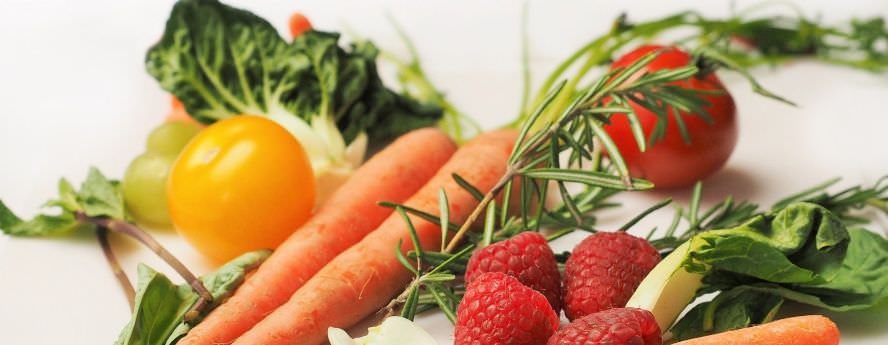
Springtime brings an abundance of healthy and delicious produce packed with many of the nutrients our bodies need this time of year. It’s also a great time for cleansing and detoxing after winter’s dense foods and nature is kind enough to provide us with leafy greens, asparagus and radishes, all perfect for a nourishing, refreshing salad.
Besides, eating seasonally is not only good for your health, it could also be cheaper, more environmentally friendly and can support your local farmers!
Spinach
Although you can find spinach in stores all year road, fresh, local spinach is available between March and June. If buying for cooking, make sure you stock up on plenty as the high water content will reduce its volume by a quarter once cooked.
This leafy green is a valuable source of vitamin A and C as well as folic acid (vitamin B9). Moreover, spinach contains iron, which is important in keeping red blood cells healthy and in producing energy in our body. It is also generous with vitamin K, needed for blood clotting and helping wounds heal properly.
On the flip side though, spinach is high in oxalic acid, potentially presenting a risk for people with kidney disease if consumed in large quantities. BBC Good Food suggest that slightly cooking it can lower the oxalic acid levels.
In the kitchen, spinach is a versatile vegetable and you can benefit from its excellent nutritional value in delicious and hearty dishes like this slow-roasted spinach and mushroom filled aubergines.
Rhubarb
This sour vegetable (even though it’s mainly used in desserts) starts showing up early in the year, but this is a forced crop, grown in pots. The field grown rhubarb arrives in spring, between late March and June, and its stalks are usually a deeper red and the leaves are brighter.
Rhubarb is a good source of fibre and also contains a decent dose of vitamin C and calcium. While there are no recent studies proving the health benefits of eating rhubarb, 20 years ago, researchers found that eating rhubarb could decrease cholesterol levels.
Probably one of the sourest foods out there, rhubarb is high in malic and oxalic acid from where it gets its tart taste. The oxalic acid is often described as ‘poisonous’ and it can provoke bladder and kidney problems if consumed in high enough amounts.
The exceptional sour taste of rhubarb makes it harder to enjoy without adding plenty of sugar or baking it into a pie. Nonetheless, it is also possible to use it in low-sugar recipes like this strawberry rhubarb crumble.
Asparagus
The highly prized English asparagus is traditionally in season from 23 April (St George’s Day) to 21 June (the summer solstice) and many shops start counting down the days until the next year’s crop, as soon as the season ends.
Asparagus contains more folic acid than any other vegetable. Eating only 4 spears would give you almost half of the daily folic acid recommendation (for adults and children over 11 years). Folic acid is vital to the formation of red blood cells. Not getting enough can cause anaemia and during pregnancy it can lead to malformations in the baby’s spine.
Asparagus is really diverse in the ways it can be cooked and enjoyed. If you want to make the most of your spring spears, steam them along with beans and peas for a healthy pasta primavera dish.
Strawberries
When local strawberries hit the shelves, we know summer is around the corner. Even if imports are available through the whole year, the British strawberry season runs from late May through to September.
Strawberries are low in calories and don’t have any fat. They are rich in vitamin C (just 8 strawberries can provide more vitamin C than an orange) and phytochemicals that help maintain the nervous system’s health. Research has also shown that antioxidants in strawberries have a role in reducing the risk of age-related eye disease. What’s more, there is evidence that their anti-inflammatory agents could prevent some forms of cancers like colon, lung, breast, gastric or oesophagus.
One of the best ways to savour the full flavour of in-season strawberries is probably au naturel! Look for bright red, unblemished berries with fresh-looking green caps. The scent is also an indicator of quality and smaller strawberries are often sweeter. Eat the Seasons suggest choosing organic fruit if possible and to rinse and wipe them clean, as strawberries absorb water quickly.
Being able to go to the supermarket and pick up spring and summer produce on a winter’s day has become something casual nowadays. But eating what’s in season is a natural guideline for getting the nutrition we need. Learning to sync our diet with the seasons can not only maintain our connection with nature and make us appreciate each season for what it has to offer, but it can also have great benefits for our health.
Disclaimer: The content of this website is provided for informational purposes only and does not substitute the medical advice from a healthcare professional.